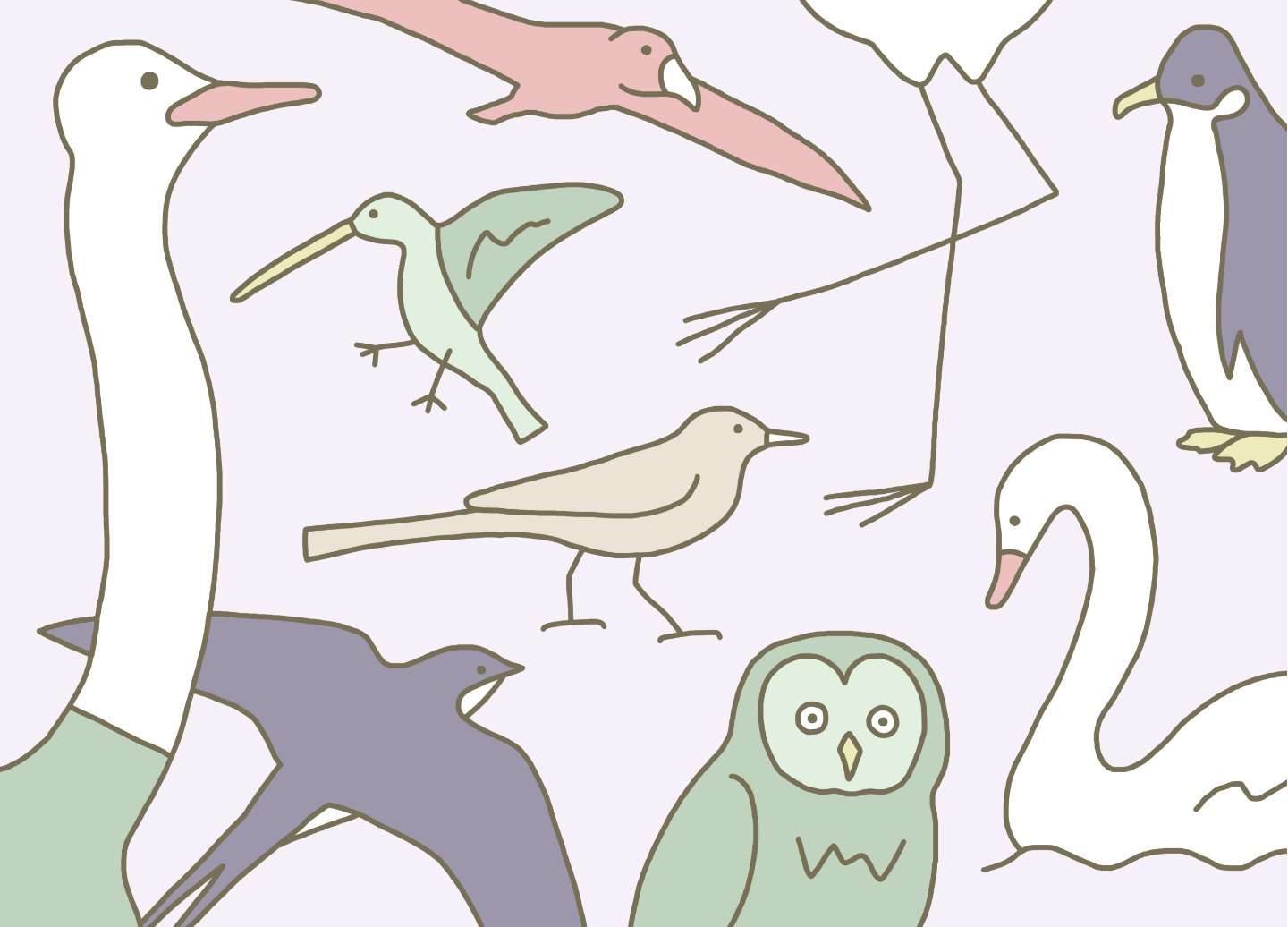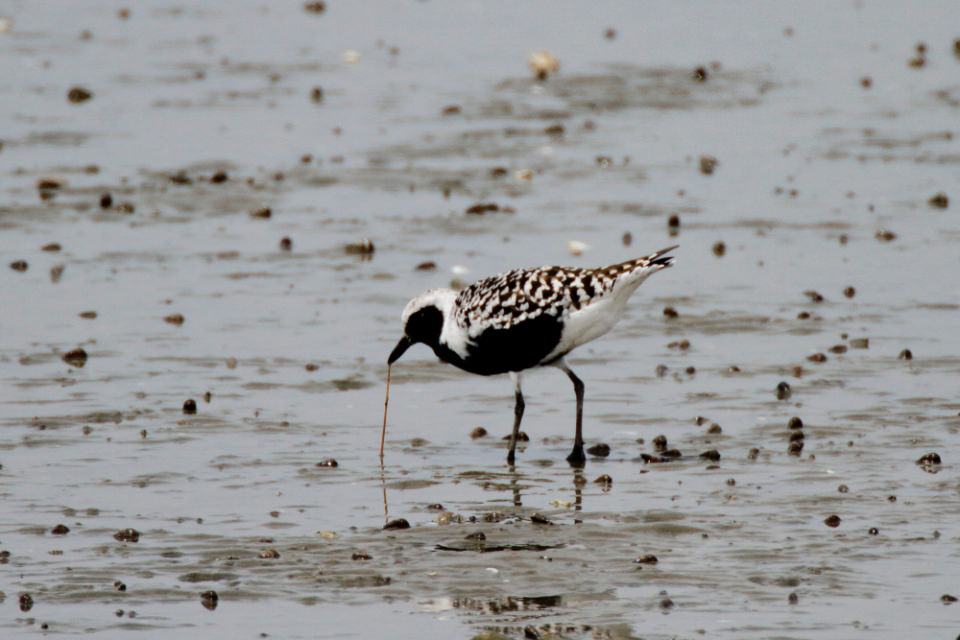What birds tell us Vol.2
Birds and biodiversity


The word biodiversity at first seemed a rather complicated technical term, but since Japan signed the Convention on Biological Diversity (CBD)* and the Ministry of the Environment also began efforts to popularize the term, it has in recent years been widely adopted into common speech in Japan. The general understanding of its meaning is that it has something to do with having an abundance of different living things on Earth.
Biodiversity specifically refers to three components of biological diversity, namely ecosystem, species, and genetic diversity. An important aspect of biodiversity is sufficient population numbers for and genetic diversity among each of the various species of birds and other living creatures on Earth.
*The Convention on Biological Diversity (CBD) is an international agreement for global measures aimed at conservation of biological diversity, the sustainable use of its components, and the fair and equitable sharing of benefits arising from the use of genetic resources. It was adopted in May 1992 and went into force in December 1993.
While high diversity basically means having a large number of species, for birds it emphasizes not just the number of species, but also the variety in their shape, ecology and habits. Consider the range in body size, for example, from the 2 grams of the bee hummingbird of Cuba on the small side, to the 120 kilograms of the ostrich, some 60,000 times the hummingbird, on the large side.
Many birds can fly since they have wings, but that is not the case for all birds. The wings of the ostrich and the emu have atrophied so they can only walk and run on the ground. Conversely, the Pacific Swift spends the greater part of the year in the skies flying, and when the Short-tailed Albatross heads out to sea it stays out, continuously flying over the open water without returning to land except to sleep. The Peregrine Falcon employs a tactical maneuver when hunting that pushes its wings to the limit, diving from a high altitude at a speed of up to 300 kilometers per hour to pluck its prey out of midair.
Their diet also varies widely; some eat grass and other plants while others prefer meat. Geese and swans eat grass and roots, while the Dusky Thrush and waxwings eat fruit. The Eurasian Jay and the Spotted Nutcracker love acorns and pine nuts. Wild fruits are a main source of food for sparrows and cardueline finches. The Japanese White-eye and the Japanese Bush Warbler mostly eat insects. Gulls, terns, and cormorants are fish eaters. Most raptors are carnivores; among them are ospreys, which eat only fish, and scavengers such as the Steller's Sea Eagle and the White-tailed Eagle that mainly eat salmon and other fish that they catch at the coast in winter.

The habitat of birds also differs greatly. The Emperor Penguin breeds on inland areas of the barren, frigid Antarctic continent in temperatures as cold as -50℃ (-58°F). The Bar-headed Goose and the Demoiselle Crane cross the 7000-metre-high Himalayas with ease. There are birds that live in marshy areas as well as those that live in deserts where there is almost no rain and daytime temperatures reach +50℃ (122°F). These differences in habitat and food sources have brought about changes in the behavior and lifestyle of birds, and have affected their various evolutionary developments in shape. Cranes and herons have developed long necks and beaks in order to catch fish at the water's edge, and penguins have changed their wings for fins so they can swim. Hummingbirds have developed a smaller body so they can suck nectar while hovering in front of a flower, and their tongue has changed shape, growing longer and developing a brush-like tip to enable them to more effectively capture nectar.
The extremely high diversity of bird species has made it possible for them to live in the wide variety of environments here on Earth. As a result, the biodiversity of those places has grown, and the diversity of living things other than birds has also increased. Birds are the guarantors of biodiversity.

What happens if biodiversity declines? A decline in biodiversity basically means that birds such as those that are endangered and few in number already rapidly disappear, and the number of just a few species (perhaps just one) increase. Ecological biota (plant and animal life) become simplistic, and the more simplistic they become, the more unstable the ecosystem grows. For example, the damage to forests from deer has become a problem; when deer grow in numbers not only do the bamboo grass and other small plants covering the forest floor get completely eaten up, but the seedlings do also, causing the ecosystem to become extremely depleted. The various species of insect that eat the vegetation on the forest floor also disappear, and if the insects disappear the birds that eat those insects move out, and the raptors that are higher up the food chain also leave. Since the seeding gets eaten up, the renewal of the forest is also blocked.
On another front, a rich ecology provides various blessings, or bounty, to humans. This is called “ecological service.” Directly, there is the bounty of the mountains in the form of edible wild plants in spring and mushrooms in autumn. There is the fresh, clean air and water of forest valleys. A rich, stable forest can also serve as a watershed protection forest, protecting us from flooding and landslides.
The ecosystem supports human life in important ways that we do not notice. Various plants and animals nurture the culture of the area where they are found, and they also play a large role in increasing our quality of life.

Wildlife ecologist
Professor Emeritus, College of Science at Department of Life Science in Rikkyo University
Former President of the Ornithological Society of Japan
Born in 1950 in Osaka Prefecture. Areas of research include evolutionary ecology of plants and animals with particular focus on avian species, and also environmental issues. Vice-president and Trustee member of the Wild Bird Society of Japan. Currently works as editor in chief of Strix, a member-authored journal of field ornithology, published by the Wild Bird Society of Japan.
